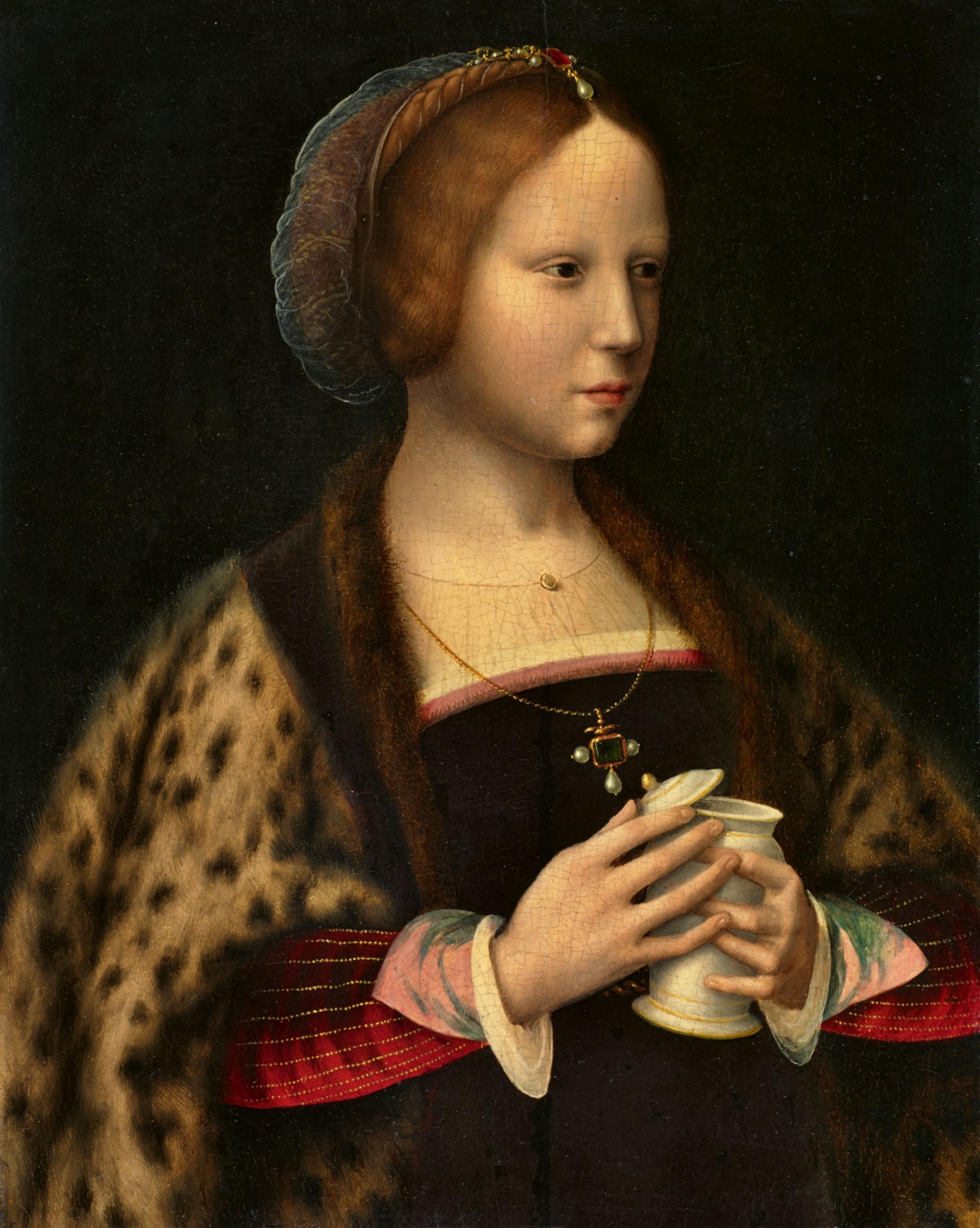Joos van Cleve and studio
Portrait of a Lady as Mary Magdalene
Oil on panel (parquetted). 36 x 27 cm.
Joos van Cleve was one of the most important portraitists of his time. This depiction of a lady as Mary Magdalene is an unusual example of his work, as it presents a skilful combination of worldly and religious representations. The half-length figure is depicted in a three-quarter view, facing right against a dark background. She holds a small white albarello ointment jar, which identifies her as the unnamed woman who anointed Christ's feet in the gospel of Luke (7:37-38), who is generally associated with Mary Magdalene. The hagiographic work known as the Legenda Aurea attributes her with royal lineage, and this is reflected in this elegant portrait. The sitter wears a gold necklace, a lynx pelt stole, and a pink-trimmed black gown with arms of red Burgundy velvet run through with golden threads. A sheer veil partially conceals her long hair, which she wears braided and coiled around her head, and a pearl-rimmed ruby ornament decorates her forehead. Her face is fine and symmetrical, with a high forehead, long, slender nose and full, well proportioned lips. Light from the left illuminates her noble features.
John Hand rightly assumes this work to be a portrait. Concealed portraits such as the present work, in which the sitters are depicted in the guise of saints, were not uncommon in the Netherlands in the early 16th century and served not least as an allusion to the virtues of their subjects. Courtly ladies displayed special preference for Mary Magdalene, as shown by portraits of Catherine of Aragon and Margaret and Isabelle of Austria.
The present work displays an especially refined technique in which Joos van Cleve has rendered the young lady's face with particular attention to detail. The artist favoured dark, neutral backgrounds such as that of the present work after 1520, in order to accentuate the bright, porcelain-like skin of his sitters. The noble and elegant appearance of the lady depicted here indicates that she may have been a member of the Flemish aristocracy or court.
Friedländer dated the work to around 1530, whereas John Hand placed it slightly earlier, at around 1525.
Provenance
Collection of Amédée Provoust, Roubaix. - Auctioned by Muller, Amsterdam 27.11.1927, no. 40b. - Rosenheim Collection, Berlin. - Auctioned by Muller, Amsterdam 9.12.1930, no. 2. - Private ownership, Germany.
Literature
M. J. Friedländer: Die Altniederländische Malerei. IX Joos van Cleve, Jan Provost, Joachim Patenier, Berlin 1931, no. 44 (attributed to Joos van Cleve). - M. J. Friedländer: Early Netherlandish Painting, IXa, Joos van Cleve, Jan Provost, Joachim Patinier, Leyden-Brüssel 1972, p. 59, no. 44, illus. 59 (attributed to Joos van Cleve). - J. Hand: Joos van Cleve, New Haven-London 2004, p. 146, no. 53.1 (attributed to Joos van Cleve and studio).

